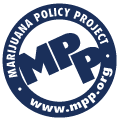|
We Update Daily!
 Custom Search Custom Search
Chris S. Kenoyer. Owner
MMJ Patient, Medical Activist,
Online Patients Advocate,
Online MMJ News Journalist
My Medical Bio
Follow Us Now On Twitter
@MedicalMMJMan
Or Follow Us Now
On Facebook
Email Us Here
olpwebs@yahoo.com
Or Email Us Securely Here
MedicalMMJMan@countermail.com
NEW 100% Encrypted Email Server
OLP’s Free MMJ News EList
Get The Latest In MMJ News
Press Contact Info
Is CBD? A Possible Cure For
Breast Cancer..? And All The Other
Many Forms & Types Of Cancer..?
Learn More About CBD Here
***************************
Advertise Here On OnlinePot
Rates As Low As $50 a Year
24/7 – 365 Days A Year Of Sales!
***********************************
Website Navigational Links
Main Start Page 2
**************************
Latest Marijuana News Reports
*********************************
Parody’s Cartoons US
Government Grown Pot,
Term Papers, School
Reports, & Thesis’s On
Marijuana & Cannabis
*********************************
Amsterdam A to Z
********************************
Canadian Marijuana Websites
*******************************
Church’s & Pot Cannabis
*****************************
Co-Ops, Clinics, Dispensary’s
*****************************
Marijuana Doctors & Clinics
****************************
Pot Cooking Recipes
****************************
Drug Testing A To Z
***************************
Pot Games
****************************
Pot Songs Video’s
****************************
100’s Of Grow Guides
***************************
Hash A- Z
***************************
Cannabis Legal Info, Drug
Lawyers, State, Federal Laws,
State & Supreme Court Rulings
**********************
POW’s Of The MMJ War!
*****************************
Other Marijuana Websites
Reciprocal Link Exchange
****************************
Medical Marijuana Studies,
Research Report’s, Medical
Cannabis Clinic Study’s
****************************
Parody’s & Cartoons
When We All Need A Good Laugh!
****************************
Avoiding Online MOM Scammers
Newly Re-Updated Info!
*****************************
The Politics Of Contraband
Medical Marijuana In The Mail?
******************************
The Hall Of Shame Section
The Online MOM Scammers
*****************************
Online MOM Providers Ads
****************************
Politicians & Voters Rights
****************************
Medical Marijuana, Strains
****************************
The OG Marijuana Strain Guide
****************************
800+ FAQ Growing Questions
****************************
Patients Spiritual Guidance,
Free Online Crisis Help Center
****************************
Online Marijuana Seed Banks
****************************
Maximum Security Section
Just Updated!
*****************************
Traveling Tips, Guides, B & B’s
****************************
Vaporizers A To Z
*****************************
Online Pot Video’s & Movies
**********************************************
Please Visit Both Of Our Sister Websites!
Maine Patients Coalition.org
The Reefer Madness Teaching Museum.org
Listen Right Here Online!
To Original 1930-1950’s
Reefer Madness Propaganda
Radio Shows And Programs
Before TV There Were
"Radio Stars"



*********************************
Legal Disclaimer
Guest Book
Translate Text or Web Page Go To:
Language Tools Google Translations
Article Submissions & News
Reports Are Always Gladly
Accepted Here.

No part of this site maybe used or
reproduced in whole or in part
without the written consent of the
Copyright Owner
www.onlinepot.org
OLP ENTERPRISES L3C
1999-2014 Copyright
© All rights reserved
OnlinePot assumes no legal liability for any products, or information or
news posted, services offered, Or
any contests or give away’s offered.
|
|
THE MEDICINAL USES OF COCA AND MARIJUANA
AND THE HYPOCRISY OF WESTERN MEDICINE
Category: Neurochemistry
Term Paper Code: 86
Return Back To Main Medical Reports Page
The Medicinal Uses of Coca and Marijuana and the Hypocrisy of Western Drug Policy.
Sergio Hernández
13194679
Molecular and Cell Biology 165
May 6, 1999
Keywords: Benzodiazepine Cannabinoid, Cannabis, Cocaine
Abstract:
The scientific basis for the medicinal use of coca and marijuana has until recently been anecdotal and lacking in scientific research, but recent findings may undermine the often hypocritical governmental opposition to the use of these valuable medications. Coca has been shown to cure a variety of maladies by both indigenous doctors and Western doctors, such as Dr. Andrew Weil. A proposed neurological mechanism suggests that the body uses two different neurotransmitter pathways, depending on the concentration of cocaine present. Low doses of cocaine administered over a long period, such as in coca use, would activate the norepinephrine pathway. High doses of cocaine, as in purified cocaine, would stimulate the dopamine pathways, associated with addiction. This mechanism allows for a comparison between cocaine and caffeine, a legal though highly addictive drug and provides a chemical distinction between coca and cocaine. Marijuana’s medicinal use has been given credibility by the discovery of a cannabinoid receptor and an endogenous cannabinoid, anandamide. New research suggests that cannabinoids may play significant roles in the pain pathways, interacting with the opiate receptor. Marijuana has also been found to bind the benzodiazepine receptor, implying that it could be used to treat anxiety disorders, rather than highly addictive, toxic benzodiazepines. A recent report by the National Institute of Medicine supports the use of marijuana for AIDS wasting, anxiety disorder, nausea, and pain relief, and dispels the belief that marijuana is a "gateway" drug. Denying valuable medications, such as coca and marijuana for political reasons while allowing and advocating the use of addictive, dangerous medications, like benzodiazepines, for financial, opportunistic purposes is a clear sign of the hypocrisy of Western drug policies.
Over the past few years, the United States and the rest of the Western World have witnessed a burgeoning of herbal and natural medicine, which much of the medical establishment has berated and the Western governments have ignored. The herbal medicine revolution’s first battle began almost thirty years ago and the medications involved in the battle have faced considerable fire from both medical and governmental institutions. The plants, coca and marijuana (cannabis), have both been stigmatized and associated with moral debasement since their international ban with the Single Convention on Narcotic Drugs in 1961 and their definitive United States ban in 1970 with the passage of the Controlled Substances Act. Both substances have been intertwined with human history and used medicinally for thousands of years and they continue to be used, despite vigorous restrictive efforts. Traditionally only historical use and patient observation supported the medicinal value of both plants, but recent research has provided evidence that gives a biochemical basis for the curative properties of the plants. This paper will examine data supporting the medicinal use of these plants, the attempts of Western governments to ignore credible data, and the hypocrisy inherent in Western drug policy, the United States in particular, with regard to medicinal compounds.
Coca
There is archeological evidence suggesting that Erythroxylon coca has been cultivated and used medicinally since 3000 BC (Plowman 1979), making it one of the first cultivated plants. Coca is used to refer to the species Erythroxylum of the Erythroxylaceae family. The Erythroxylum genus contains about 250 species found in South America. Coca is a sacred plant of many indigenous peoples in South America and until recently, has served as a medicinal and dietary staple. It is known medicinally "as the gran remedio – the great remedy- for ailments as diverse as toothache and altitude sickness (Weil 1995)." As nutritional supplements, "coca leaves contain several alkaloids, essential oils, and relatively high amounts of vitamins and minerals (Plowman 1979)." As is well known, coca also contains small amounts of the alkaloid cocaine (0.50er leaf on average (Weil1981)). Cocaine was isolated as the "active component" of coca in 1860, the first step towards the dishonoring of the coca plant and those which depend upon it. The isolation of cocaine at first seemed ideal. It eliminated the problem of developing different forms of administering coca and the need to consume large amounts of coca. Cocaine concentrated coca’s well-known anesthetic and stimulant properties into an easily administrated powder. This was the problem. Cocaine, in every possible way, violated the natural safety net against abuse, addiction, and adverse effects.
The differences between coca and cocaine administration present the first problem. Traditionally, South American Indians have chewed coca leaves. There is a significant amount of variation in the preparation of coca, but the principles are the same. The coca leaves are mixed with an alkaline substance, such as lime, and formed into a quid that is tucked into the side of the mouth and allowed to mix with the saliva. After about 45 minutes, the leaves are discarded. In some tribes, such as the Cubeos of Río Cudayorí in the Vaupés territory of south eastern Colombia, the leaves are toasted, mixed with ashes from Cecropia sclerophylla, a common jungle tree, to provide alkalinity, and crushed into a fine powder. The powder is placed in the mouth, formed into a quid, and allowed to dissolve over time. The addition of an alkaline substance facilitates the entry of cocaine into the blood by increasing the pH of the mouth. (Since cocaine is a base, a basic environment prevents it from obtaining a charge, promoting its diffusion across blood vessels.)
The mastication of coca leaves results in a numbing of the mouth and "a warm satisfying feeling in the stomach and a subtle sensation of energy through the body, accompanied by a brightening of mood (Weil 1995)." The chewing of coca orally administers a very low concentration of cocaine, over a long period of time. Conversely, purified cocaine is usually insufflated, injected, or smoked (in the crack form), resulting in the delivery of high cocaine concentrations in a matter of seconds. As Dr. Andrew Weil points out, "Users of illicit cocaine dose themselves intranasally or intravenously with material that may be 600ure. Chewers of coca leaf use material containing an average of 0.5ocaine by a route of administration that causes a gradual increase in blood levels over the better part of an hour (Weil 1981)." It is quite clear that purified cocaine bypasses a mechanism that prevents abuse. Cocaine’s easy, highly concentrated, fast acting forms of delivery dramatically increase its potential for abuse and addiction.
The acute degree of addiction in the Western World has caused many Westerners to associate the problems of cocaine addiction with the source of cocaine, namely the coca shrub. Many have also claimed, probably over a drink or a smoke, that South American Indians that use coca daily are addicted. Nothing could be further from the truth. As noted by Richard Evans Schultes, "It is noticeable that the Indians who use the largest amount of coca powder…seem to be the healthiest and most robust Indians of the Colombian Amazon (Schultes 1990)." Dr. Weil reports the following:
I have lived among coca using of the Andes and the Amazon basin in Colombia and Peru and have not seen any signs of physical deterioration attributable to the leaf. I have never seen an instance of coca toxicity. Nor have I observed physiological or psychological dependence on coca. Even life-long chewers seem able to get the effect they want from the same dose over time; there is no development of tolerance and certainly no withdrawal syndrome upon sudden discontinuance of use (Weil 1981).
The belief that coca is as addictive and dangerous as cocaine is clearly misguided and has unfortunately undermined the use of coca for medicinal purposes.
The scientific basis for the medicinal use of coca is well founded in first hand observation. "I have observed the relief of symptoms of indigestion, acute gastritis, peptic ulcer, gastroenteritis, ulcerative colitis, and chronic constipation (Weil 1981)." How coca performs its curative effects is not well understood. In his paper, The therapeutic value of coca in contemporary medicine, Dr. Andrew Weil presents several mechanisms to explain the actions of coca. He states that the alkaloids, cocaine included, "belong to the tropane series and may exert some atropinic effects on smooth muscles and glands (Weil 1981)." This might serve as the basis for coca’s ability to treat maladies of the gastrointestinal tract. The atropinic effects would calm the smooth muscles of the GI tract, alleviate cramping and pain. "It is likely that one pathological mechanism underlying many gastrointestinal disorders is a vicious cycle of feedback between the stomach or intestine and the CNS…interruption of this cycle with a safe topical anesthetic might allow the musculature to assume normal tone and function (Weil 1981)," states Weil.
Coca’s action may have a neurological basis as well. Dr. Fernando Cabieses, director of the Neurological Institute of Lima and President of the National Institute of Traditional Medicine in Peru, presents a very interesting neurological mechanism for coca. He suggests:
…that two different systems of neurotransmitters are involved in the behavioral patterns [seen] around the habitual consumption of coca and cocaine. Low doses of cocaine entering the brain slowly, may activate only the norepinephrine system, producing alertness and dissipating fatigue. Higher doses, taken in ways that cause rapid rises in concentration of the drug in the blood and brain, may in addition the dopamine system, producing the intense, short-lived euphoria that cocaine users seek (Weil 1995).
This theory is very interesting, not only because it suggests that the same chemical can stimulate one pathway more than the other, solely because of varying concentration, but more so because it shows that habitual coca use does not stimulate the dopaminergic pathways associated with addiction. Furthermore, this proposed pathway would allow for a comparison between cocaine and caffeine. Both are alkaloid stimulants that have been purified as the active ingredients in certain plants and both could potentially cause addiction and dependence. It is easy to scoff at the idea of being addicted to caffeine, but many (unknowingly addicted) people do not know that pure caffeine could be snorted or inject much the same way that cocaine can and that it could cause overdose and death. Death from caffeine overdoses are not common, partly because caffeine is not typically used in the same way as cocaine and is not as potent. Caffeine is commonly consumed in tea, coffee, or soft drinks, used for its mild stimulant effect. In fact, the use of caffeine in the Western World sounds a great deal like the use of coca in South America. Both are naturally occurring compounds that can be consumed in beverages for their mild stimulant effects. Furthermore, coca appears to be much less benign than caffeine because withdrawal symptoms are rarely witnessed, whereas headaches, irritability, and constipation often result within less than 24 hours after caffeine cessation. It is possible that caffeine operates in a pathway similar to the proposed pathways for coca and caffeine. Common caffeine usage may only stimulate norepinephrine pathways and could potentially stimulate dopaminergic pathways, causing the euphoria associated with cocaine. Coca and caffeine could thus be viewed as similar drugs, with the difference that one is legal and the other is a target in the war on drugs. In addition, the persecuted drug, coca, may offer more by providing both a stimulant effect and a plethora of medicinal value, whereas the legal, accepted drug, caffeine, provides only stimulation at the cost of potential addiction. Unfortunately, coca will remain persecuted as long as the Western World and its pseudo-leader, the United States maintain their ignorance. The United States and the US-influenced United Nations have continually tried to eradicate coca cultivation. The UN placement of coca on Schedule One of the Single Convention of Narcotic Drugs of 1961
"prohibited international commerce in the leaves (except for shipments destined for flavoring Coca-Cola(tm)) and envisioned total eradication of coca within twenty-five years…Through the nineteen-sixties and seventies, many attempts were made to limit coca production, encourage Indians to substitute other crops, and destroy coca field with herbicides (usually supplied by Washington) (Weil 1995)."
Perhaps the South Americans were encouraged to plant coffee or tea, or maybe tobacco. Fortunately, many South American Indians and coca users have banned together and slowed Western efforts, but eradication efforts are still underway.
Marijuana
The drug marijuana consists of the leaves and flower buds of the Cannabis plant, of which there are two types (possibly three): Cannabis sativa and Cannabis indica (maybe Cannabis ruderlaris). Much like coca, cannabis has been cultivated and used for thousands of years. Cannabis, again like coca, is a plant of sacred and medicinal stature. Medicinally cannabis has been used as an analgesic, an anti-inflammatory, a sedative-hypnotic, an appetite stimulant, a muscle relaxant, an antiemetic, and an anticonvulsant. For several decades, scientists have known that the active components of marijuana are a class of molecules called the cannabinoids. The cannabinoid (9-tetrahydrocannabinol (THC) has been identified as the "active ingredient" in marijuana, but it is almost certain that THC alone is not responsible for marijuana’s medicinal effects. In 1990, a breakthrough was made in marijuana research with the discovery and characterization of the cannabinoid receptor in the brain (Matsuda et al 1990). Two receptors have been discovered thus far and have been named cannabinoid receptor one and cannabinoid receptor two (CB-1 and CB-2). The discovery of the cannabinoid receptor urged scientists to seek out an endogenous cannabinoid that bound to the receptor. In 1992, scientists identified an endogenous cannabinoid, anandamide (Devane et al 1992). The discovery of the cannabinoid receptor and anandamide has allowed scientists to begin investigating the neurochemical and biochemical basis for the medicinal properties of marijuana, but the legal status of marijuana has interfered with research and medicinal use.
Although marijuana has been illegal in the United States since its placement in Schedule 1 of the Controlled Substances Act of 1970, it is currently the subject of many debates in regards to its medicinal use. Drugs in Schedule 1 of the Controlled Substances Act are regarded by the United States Food and Drug Administration (FDA) to have no known medicinal value and cannot be investigated by researchers without extensive government review and approval. The reason for marijuana’s placement in Schedule 1 was clearly an action of politics and not of science. Marijuana’s popularity among the United States’ counter-culture and anti-Vietnam protestors in the 1960s and 70s is probably the main reason for its placement in Schedule 1.
The medical utility of marijuana has resurfaced tremendously over the last decade. Many cancer patients reeling from pain and nausea (from intense chemotherapy) have turned to marijuana for amelioration. HIV-positive patients, also suffering from nausea and a desire not to eat because of their medication sometimes use marijuana to increase hunger and prevent wasting, a condition that takes many lives among HIV patients. Several states have proposed legislation that makes distribution, purchase, and consumption of marijuana for medicinal usage legal. California and Arizona have passed such legislation, but the Federal government has prevented the implementation of these voter-approved documents and arrested both buyers and vendors of medicinal marijuana. In January 1997, Gen. Barry McCaffrey, director of the Office of National Drug Control Policy, commissioned a report to assess the "cruel hoax" of medical marijuana or "Cheech and Chong" medicine as he called it (Dreyfuss 1999). The report by the National Institute of Medicine (IOM), released in March 1999 has caused many heads to turn and may finally cause the United States to review its policies on medicinal marijuana.
IOM’s report makes several conclusions and recommendations, such as: "Cannabinoids likely have a natural role in pain modulation, control of movement, and memory" and "The accumulated data indicate a potential therapeutic value for cannabinoid drugs, particularly for symptoms such as pain relief, control of nausea and vomiting and appetite stimulation (Benson and Watson 1999)." The study supported "that cannabinoids would be moderately well suited for particular conditions, such as chemotherapy-induced nausea and vomiting and AIDS wasting (Benson and Watson 1999)." The IOM’s report gave the US government and Barry McCaffrey little to cheer about. Although the report ascertains that both tolerance and withdrawal may develop from marijuana use, it states that withdrawal symptoms "appear to be mild compared to opiates or benzodiazepines, such as diazepam (Valium(r)) (Benson and Watson 1999)." In addition, the long held belief that marijuana is a "gateway" drug, a drug that introduces user to more dangerous, addictive drugs, was dismissed by the study: "But because underage smoking and alcohol use typically precede marijuana use, marijuana is not the most common, and is rarely the first, "gateway" to illicit drug use (Benson and Watson 1999)." The IOM’s report does acknowledge that there is a considerable risk of developing cancer from prolonged smoking of marijuana and recommend research into developing alternative methods of administering the cannabinoids in marijuana. Yet the researchers state: "Until a nonsmoked, rapid-onset cannabinoid drug delivery system becomes available, we acknowledge that there is no clear alternative for people suffering from chronic conditions that might be relieved by smoking marijuana, such as pain or AIDS wasting (Benson and Watson 1999)."
In light of the conclusions made by the IOM, many skeptics might wonder if there are additional experiments to back up the claims made in the report. In fact, many interesting discoveries are being made. The discovery of an endogenous cannabinoid, anandamide, (mentioned earlier in this paper) caused many scientists to ask: What is the role anandamide in the body? Furthermore, what do cannabinoids do in the body? If we have receptors and endogenous cannabinoids, then cannabinoids must perform some function in our bodies. Current research is showing that cannabinoids may play a large role in pain. It has been determined that cannabinoid type 1 (CB1) receptors are found in pain-processing areas of the brain and spinal cord and it is believed that endogenous cannabinoids, such as anandamide, may regulate pain transmission (Calignano et al 1998). It has also been shown that "anandamide attenuates the pain behaviour produced by chemical damage to cutaneous tissue by interacting with CB1-like receptors located outside the CNS (Calignano et al 1998)." Researchers additionally found that cannabinoids stimulate an opioid receptor (the (1 opioid receptor) in the limbic system (the brain region containing part of the cerebellum and the hypothalamus) (Tanda, Pontieri, and Chiara 1997). It is becoming increasingly clear that the use of marijuana for the treatment of pain has a well-founded biochemical basis, but what about the use of marijuana in the treatment of neurological movement disorders and anxiety, as suggested by the IOM report.
Movement disorders typically occur as a result of abnormalities in the basal ganglia and its connections through the thalamus to the cortical motor areas; a disruption along any point along the pathway results in a movement disorder. These disruptions can be genetic or result from drug use. A type of movement disorder known as dystonia, which includes the horribly debilitating Huntington’s disease, has been considered for cannabinoid treatment. Although research is limited because marijuana’s Schedule 1 classification prevents it from being studied in humans, an open trial study was conducted using cannabidiol (the cannabinoid with the second highest concentration following THC in marijuana) on dystonic patients. The study, "suggested modest dose-related improvements in the five dystonic patients studied (Benson and Watson 1999)." Cannabinoids have also been found to decrease dystonia in mutant dystonic hamsters (Benson and Watson 1999). Cannabinoids have also been considered for the treatment of Parkinson’s disease. Parkinson’s results from the death of dopamine-producing (dopaminergic) cells in the substantia nigra region of the brain and this in turn results in an increase inhibition of the motor thalamus, the region of the brain responsible for initiating movement. It is believed that cannabinoids may help ease Parkinson’s symptoms by inhibiting the pathway between the substantia nigra and the motor thalamus, thereby decreasing the inhibition of the motor thalamus. The use of cannabinoids to treat Parkinson’s is still theoretical and requires substantial research.
Neurological conditions such as dystonia have been found to worsen with stress and anxiety, creating a vicious cycle. For instance, a dystonic patient trying to get out of someone else’s way in a café may become nervous about having to perform a coordinated movement quickly. The patient’s nervousness would increase the symptoms and cause the individual to become even more nervous. Conditions such as dystonia that increase with anxiety have been particularly considered for cannabinoid treatment because cannabinoids have been found to decrease anxiety. Research has confirmed the long held belief that marijuana decreases anxiety. In a clinical study consisting of 50 healthy, chronic marijuana users and 50 matched controls, the marijuana users scored much lower on Taylor’s Manifest Anxiety Scale (TMA) (Sethi et al 1986). Clinical studies such as this one, led researchers to inquire if cannabinoids were interacting with benzodiazepine receptors. Benzodiazepines, such as diazepam (Valium(r)) and alprazolam (Xanax(r)), are a class of molecules, known as sedative-hypnotics, which are used in the treatment of anxiety and several behavioral disorders. Studies where performed, wherein cannabis treated rats were tested for anxiety with foot-shock induced aggression. The rats scored high on the test, suggesting that cannabis had decreased the anxiety and aggressive behavior in the rats. The rats were then tested after being given a benzodiazepine receptor antagonist, which binds to the receptor and prevents binding of other molecules. The increased tolerance for foot-shock induced aggression was blocked by the antagonist. This suggests that cannabis was interacting with the benzodiazepine receptor (Sethi et al 1986).
The findings that THC binds to the benzodiazepine receptor imply that marijuana may be useful in the treatment of conditions that are now treated by benzodiazepines, such as anxiety disorders. For many benzodiazepine users, the prospect of a different method of treatment may be welcome because of the many adverse effects caused by benzodiazepines. This class of compounds have many unpleasant side-effects: "sedation, loss of coordination, aggravation of glaucoma, confusion, nausea, vomiting, decreased reflexes, trembling, delusions, muscle weakness, among others (WWW1)." There is a significant degree of dependence and withdrawal symptoms that can develop to therapeutic doses. "Discontinuation is associated with increased anxiety and agitation, decreased sleep, high arousal and agitation, and in extreme cases, seizures. There may also be flu-like symptoms, dysphoria, unsteadiness, and in extreme cases (but rarely), hallucinations and psychosis (Salzman 1998)." Marijuana withdrawal is not as potent: "Withdrawal symptoms can be observed in animals, but appear to be mild compared to opiates or benzodiazepines, such as diazepam (Valium(r)) (Benson and Watson 1999)."
Considering the dangers involved with benzodiazepines it is surprising that they are in Schedule IV of the Controlled Substances Act, suggesting that the drugs do not have much potential for addiction or abuse. It appears many physicians and the US government believe that benzodiazepines are benign therapeutic drugs and "although some patients may continue to take benzodiazepines to avoid discontinuation symptoms, this is not evidence of ‘addiction’ (Salzman 1998)." Although benzodiazepine dependence may not be an addiction in the strict sense of the term, it is quite ignorant to disregard the need of some patients to continue benzodiazepine use in order to prevent withdrawal symptoms, even though they would like to stop taking the medication. One could argue that heroin addicts, for instance, continue to take heroin, although they would like to stop, in order to "avoid discontinuation symptoms." The placement of benzodiazepines in Schedule IV trivializes the powerful nature of these drugs, especially when a drug like marijuana with far fewer side effects and many more medicinal applications remains improperly categorized in Schedule I. The Schedule IV of categorization benzodiazepines emphasizes the political nature of the Controlled Substances Act. Tremendously lucrative and politically resourceful pharmaceutical corporations manufacture benzodiazepines. Merck Pharmaceuticals had a 14ales increase in 1998 with an annual gross of $26.9 billion and a net income of $5.25 billion. The mere suggestion of placing benzodiazepines in a more restricted category would meet immense opposition from the companies that produce them, the doctors that prescribe them, and the primarily upper class citizens that consume them (a prescription of 30, 1milligram pills of Xanax(r) costs $37.65). It would be no surprise that if marijuana were ever demoted, it would be on the condition that only the US government or certain pharmaceutical companies could grow and sell the plant, rather than allowing small private businesses. Marijuana, like coca, faces the hypocrisy of United States, and therefore Western, drug law. It is incredulous that natural medications of such importance remain prohibited, while more toxic, dangerous drugs, both with medicinal properties (benzodiazepines) and without (alcohol, tobacco) are readily available.
The status of marijuana and coca in the United States and their inaccessibility for medicinal use is in a sense a violation of patients’ rights and the ideals of medicine. The government’s continual hindrance of research and their disregard for conclusive data supporting the medicinal use of these drugs is unconscionable. Coca’s curative powers have been harnessed by indigenous peoples for thousands of years and witnessed by physicians of Western medicine. Yet, coca has been shunned as a medication by Western medicine because it is the natural source of cocaine, a compound that would have probably not been detrimental had it not been isolated in the West. Western drug policies, in particular the United States’, have denied millions of people a potentially useful medication because of its association with cocaine, a product of the West, while allowing the legality of highly addictive drugs with known health hazards and no medicinal effects, such as alcohol and tobacco. The continual prohibition of the medicinal use of marijuana in light of voter approved propositions, substantial and credible cannabinoid research demonstrating marijuana’s usefulness, and the support of a government commissioned study on marijuana medicinal use, reflect the ignorance of the United States and the West. Recent research showing marijuana’s usefulness in neurological disorders, anxiety disorders, and pain, in addition to its use in preventing nausea and AIDS wasting, are too resounding to be ignored. Current treatments for anxiety disorders, such as benzodiazepines, result in a overabundance of dangerous and uncomfortable side effects, side effects which for the most part would not be present as a result of marijuana use. Furthermore, the dependence and withdrawal symptoms for marijuana are not as powerful as with benzodiazepines (Benson and Watson 1999). Rather than administer or even consider less toxic, more effective medication, such as coca and marijuana, Western medicine continues to prescribe drugs with side effects that sometimes outweigh the cure, while Western governments continue to ignore research and stubbornly deny the medical utility of coca and marijuana. Until Western governments remove their blinders and allow the use of these medications, the illness of hypocrisy will persist in Western medicine.
Hernández
References
Benson, J.A., Watson, S.J. "Marijuana as Medicine: Assessing the Science Base." Institute of
Medicine, Division of Neuroscience and Behavioral Health. Available online at http://www.nap.edu (1999).
Calignano et al. "Control of pain initiation by endogenous cannabinoids." Nature 394(6690) (16
Jul. 1998): 277-81.
Devane, W.A. et al. "Isolation and Structure of a Brain Constituent that Binds to the Cannabinoid
Receptor." Science 258 (18 Dec. 1992): 1946-1949.
Dreyfuss, R. "Another Victory for Medical Marijuana." Rolling Stone Issue 812 (13 May 1999):
32-33, 105.
Matsuda, L.A. et al. "Structure of a Cannabinoid Receptor and Functional Expression of the
Cloned cDNA." Nature (9 Aug. 1990): 561-564.
Plowman, T. "Botanical Perspectives on Coca." Journal of Psychedelic Drugs 11(1-2) (Jan.-Jun.
1979): 103-117.
Salzman, C. "Addiction to Benzodiazepines." Psychiatric Quarterly 69.4 (Winter 1998): 251-
261.
Schultes, R.E. and Raffauf. 166-176 of The Healing Forest. Dioscorides Press (1990).
Sethi, B.B. et al. "Antianxiety Effect of Cannabis: Involvement of Central Benzodiazepine
Receptors." Biological Psychiatry 21.1 (Jan 1986): 3-10.
Tanda, G., Pontieri, F.E., Chiara, G.D. "Cannabinoid and Heroin Activation of Mesolimbic
Dopamine Transmission by a Common (1 Opioid Receptor Mechanism. Science 276 (27 Jun. 1997):2048-2049.
Weil, A. "Letter from the Andes: The New Politics of Coca." The New Yorker 71.12 (15 May
1995): 70-80.
Weil. A. "The Therapeutic Value of Coca in Contemporary Medicine." Journal of
Ethnopharmacology 3 (1981): 367-376.
WWW1. Geriatric Drug Review-Librium, Valium, and Xanax.
Return Back To Main Medical Reports Page
|



 Button Ads!
Button Ads! 




